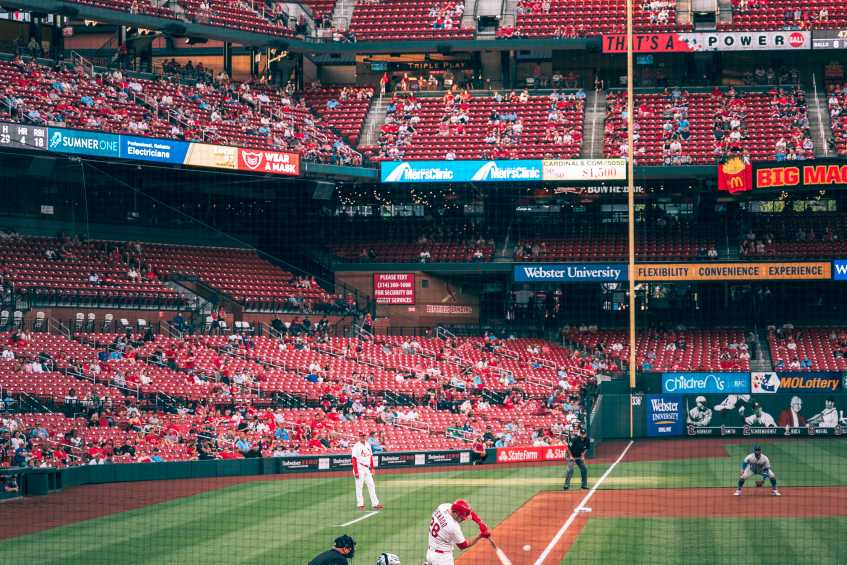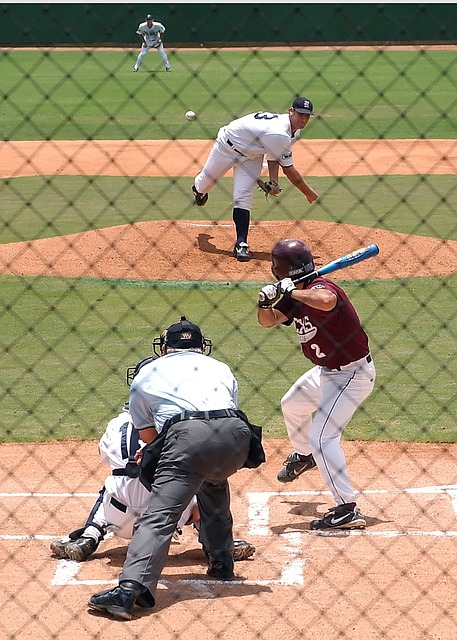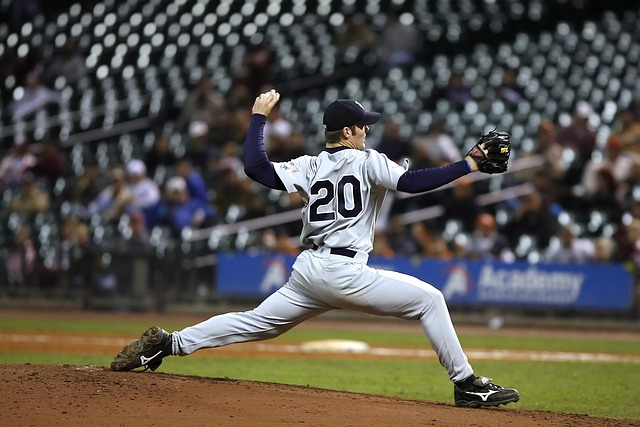
As baseball continues to evolve, one of the most significant changes to the game has been the implementation of the MLB pitch clock. The pitch clock is designed to speed up the pace of play and reduce game times. In this article, we will discuss what is a hitter's clock violation in baseball, how the new rule works, penalties for violating it, timeout rules for batters and pitchers, reducing game times with the new clock, and the role of umpires in enforcing any pitch clock violation.
In short, a hitter's clock violation is based upon the new rule pitch clock rule and it occurs when a batter fails to step into the batter's box before the clock hits 8 seconds. The pitching clock was implemented to help speed up the game, and if a batter takes too long to get ready, it can lead to dead time in the game.
The MLB pitch clock is an essential tool for speeding up the pace of play and reducing game times. The new rule ensures that pitchers and batters are ready to play and eliminates the unnecessary time wasted between pitches. It has been successfully implemented in the minor leagues and has proven to be effective in reducing game times.
The pitch clock was first introduced in the minor leagues in the 2015 season, and it was implemented in the MLB during the 2023 season. The clock rule has been controversial since its introduction, with some players and fans arguing that it disrupts the natural rhythm of the game. However, many baseball insiders believe that it is necessary for the continued success of the sport and it has reduced minor league games by 26 minutes.
The clock is set for 15 seconds when the bases are empty and 20 seconds when runners are on base. The pitcher must begin his delivery before the clock runs out, or the umpire will call a violation.
It starts when the pitcher receives the ball back from the catcher or another fielder. The clock is reset when a pitcher steps off the rubber or throws to a base.
There are a few exceptions to the new rule. For example, the clock is reset if a foul ball is hit, or if a ball is thrown out of play. Additionally, umpires have discretion over the pitching clock in situations such as an MLB player injury or equipment issue.

One of the most significant penalties for violating the new rule is the automatic ball or automatic strike call. If the batter is not in the box and ready to hit within the allotted time, an automatic strike is called. The automatic strike can be a significant disadvantage for the batter, potentially changing the outcome of the at-bat or game.
Pitchers are allowed to call one timeout per plate appearance. The pitcher can use the seconds left in this timeout to adjust their grip on the ball, confer with the catcher, or take a breather. The timeout can only be called when the pitcher is on the mound and the batter is in the box.
Batters are allowed to call one timeout per plate appearance. The batter can use this timeout to adjust their gloves or equipment, take a breath, or gather their thoughts. The timeout can only be called when the batter is in the box.
It's important to note that it is not meant to eliminate all timeouts. Pitchers and batters are still allowed to take a breather or make necessary adjustments, but they must do so within the allotted time. If they exceed the time limit, they will be penalized.

The pitch clock was implemented in Major League Baseball to speed up the game and reduce game times. The amount of time saved depends on how strictly the clock is enforced and how long pitchers take to deliver their pitches. According to MLB, the new clock is expected to reduce game times by an average of 10-15 minutes per game, but early results show that closer to 25 minutes.
The clock gives pitchers 15 seconds to deliver the pitch from the time they receive the ball. With runners on base, the clock is extended to a full count of 29 seconds. If the pitcher fails to deliver the pitch within the allotted time, a ball or strike will be called depending on the situation. This helps to keep the game moving and reduces dead time between pitches.
In addition to the clock, MLB has implemented other measures to speed up the game, such as reducing the time between innings and limiting the number of mound visits. All of these changes are aimed at reducing game times and improving the overall pace of play.
The new clock has had a significant impact on the pace of play in baseball. It the pitch timer has forced pitchers to work more quickly and be more efficient with their time on the mound. This has resulted in more balls being put into play and fewer strikeouts.
The faster pace of play has also made the baseball game much more exciting for fans. With fewer breaks between pitches, there is less dead time and more action on the field. This has led to higher ratings and increased interest in the sport.

Umpires are responsible for controlling the clock during games. They have the ability to reset the clock if necessary and can issue penalties for violations. Umpires are also responsible for ensuring that the clock is set up and functioning properly before the start of each game.
The new clock has been a controversial topic among umpires, with some feeling that it takes away from their authority on the field. However, most umpires understand the importance of the clock in speeding up the game and have worked to enforce it as best they can.
One potential issue with umpire control of the pitching clock is that it can lead to inconsistencies in enforcement. Some umpires may be more lenient than others, which could lead to confusion among players and coaches. To address this issue, MLB has implemented a system for monitoring the clock from the league office.
Overall, the new clock has been a positive addition to Major League Baseball. It has helped to speed up the game and make it more exciting for fans, while also forcing pitchers to work more efficiently. With continued enforcement, the pitcher's clock will likely become a permanent part of the game and continue to improve the overall pace of play.
If the clock runs out during a plate appearance, the result is an automatic ball or strike depending on the count. If the batter is ahead in the count, a ball will be called. If the pitcher is ahead in the count, a strike will be called.
Yes, batters can still call one timeout per plate appearance under the new clock rule and use that to momentarily step out of the batter's box.
No, clock violations cannot be challenged by teams. It is up to the umpires to enforce the rule.
In conclusion, the MLB Pitch Clock has been a significant change in the world of baseball since its introduction this season. The new rule was designed to speed up the game and improve the pace of play, and it has certainly had an impact in that regard. While the new clock has faced some criticism from players and fans alike, it seems to be here to stay as MLB continues to enforce it.
Overall, the clock rules have led to shorter game times, faster pitching sequences, and more action on the field. While there have been some penalties for players and teams who have violated the new rule itself, the benefits of the pitching clock seem to outweigh the drawbacks. It remains to be seen whether it will continue to evolve and change over time, but for now, it is an integral part of the game of baseball.
As we move forward, it will be interesting to see how the MLB rule impacts the sport, and how players and teams adapt to the new rules. It is clear that it has had a significant impact on the pace of play, and it will be exciting to see how this affects the game in the years to come. Regardless of its impact, it is safe to say that the new clock rule is a necessary step for baseball as it continues to modernize and evolve to meet the needs of its players and fans.
Chris Sloan is a former baseball league commissioner and travel baseball coach who has made significant contributions to the sport. In 2018, he founded selectbaseballteams.com, a website that helps parents find youth and travel baseball teams in their local areas. Since its launch, the website has experienced impressive growth, offering a wealth of resources including teams, news, tournaments, and organizations. Chris's unwavering passion for baseball and his innovative approach to connecting parents with quality baseball programs have earned him a respected reputation in the baseball community, solidifying his legacy as a leading figure in the world of youth and travel baseball.
There are 0 comments on "What is a Hitters Clock Violation in Baseball: Rules Explained for 2023"
chandler allen says:
"Hi my name is chandler, i’ve enjoyed..."
On Wanting to tryout for summer ball. as an 18 year old
david graham says:
"With no current MLB team in Canada,..."
On With no current MLB team in
Charles Chavez says:
"To All Coaches: Do you have13U or..."
On Looking for Games